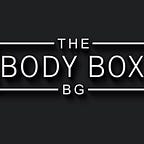Reasons Why Food Tracking Apps are Wrecking your Results
Food or macro tracking mobile apps or websites have been a savoir for many dieters, as it promotes a level of self awareness for the actual calorie balance that your diet and lifestyle habits are creating.
However, there are features and aspects of the app that can be working against you in your battle to lose weight. By reading this article you will be able to fine tune your macro tracking abilities and possibly avoid the pitfalls of food tracking apps.
You are using the calorie goals provided by the app
When you create your profile, you are asked for your age, height, weight, gender, and normal daily activity level. Using those factors, the site determines the calories required to reach whatever goal you input.
While the equation used (Mifflin St. Joer) is a well backed estimation, it is in fact that, an estimation that can be drastically different based on your metabolism, body and activity levels.
What to do: Monitor your calorie intake and weight changes over a two week period so you can get a more exact idea of the calorie intake you need to lose, maintain, or gain weight.
You are using the macro-nutrient ratios provided by the app
The main food tracking apps will default your goals by distributing calories as follows:
50% from carbohydrates
20% from protein
30% from fat.
This set up is not optimal for muscle growth or fat loss. For now, let’s forget about the ratio of carbohydrates and fats, as that is an article in itself and concentrate on increasing the percentage or proportion of protein in the diet which has been scientifically proven to improve weight loss and muscle growth.
What to do: Aim for a higher protein intake (~30% or 1 gram per pound of lean body weight and fill in the rest with preference of fat or carbohydrates.
You are not measuring foods correctly
Weight and volume of foods are two different things. Often, the weight of a specific measurement is not repeatable and can be off by a large difference. For example, ½ a cup of dry oats are listed at 40 grams weight. However, if you measure it out in a standard cup, you can easily get values of 45, 50, or 60 grams, which can make a difference of 50–100 calories.
What to do: To ensure accuracy, weigh your food out in grams and not measure using cups and spoons.
Errors in the database
There are many entries with incomplete (e.g. the entry only has calories and no macros) or incorrect information. While a lot are accurate, many of the entries are done by normal people with little or no nutritional knowledge. This allows for a large amount of human error.
What to do: Make sure you use the verified entries on the database with the food labels of your favourite brands.
Rounding errors in the App
Each food entry is rounded to the nearest gram and then all of those entries are added up. Each adds a little bit of error, and this can add up over days and months.
What to do: Although there is not much you can do to change this and it probably won’t be a huge factor, it is something to be aware of.
Rounding errors on the nutrition label.
Nutrition labels are rounded to the nearest 5 calories (less than or equal to 50 calories per serving) or 10 calories (>50 calories per serving).
What to do: As above, this may not make a drastic difference but it’s something to be aware of.
Fibre Calculations
Nutrition labelling laws allow for insoluble fibre to be deducted from total carbohydrates when calculating total calories, but that fibre will still show in the total carbohydrates. For example, if an item had 15 grams of fibre, with 5 of that being insoluble fibre, only 10 grams (40 calories) would count towards the total calories for the nutrition label.
Note that this is optional and a manufacturer can still use the full 15 grams of carbohydrates (60 calories) for the calorie total — although most won’t to make it appear lower calorie.
20 calories less multiplied by 3 meals per day is 60 calories. Over a month this is around 1800 calories. Doesn’t sound like much, but, combined with other errors they all start to add up.
What to do: If focusing on weight loss, count all of your fibre towards your carbohydrate and calorie intake. It is better to over-estimate than under-estimate.
Alcohol
Alcohol has 7 calories per gram, but it is not counted on the most popular food tracking apps
What to do: Moderate alcohol intake and count it as a gram of fat to be safe.
You are letting food or macro tracking apps ruin your life
If you are worried about accounting for every single morsel of food that you eat, the exact amount of calories you are burning during an exercise session, or worrying about being perfect with every aspect of your lifestyle, you may be doing more harm than good. This approach is not sustainable, and can lead to negative consequences in the future.
What to do: Relax a little, and let the focus be on the underlying principles of fat loss and not the minutia.
